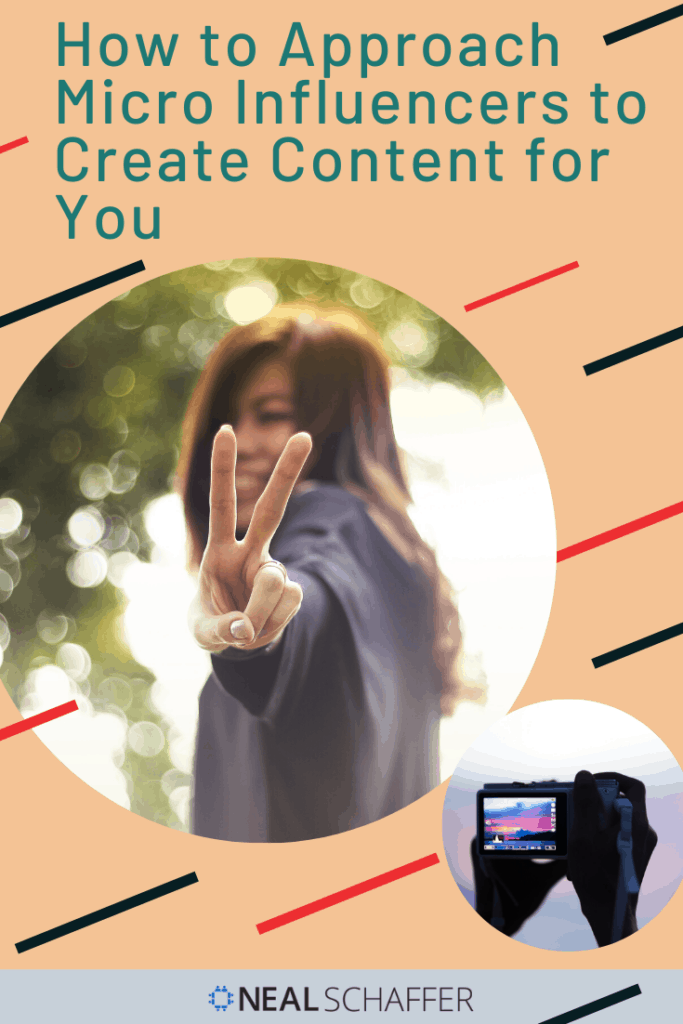Is your brand struggling with content creation for visual social networks and/or visual content mediums? Are you trying to figure out how to best leverage influencers as part of your content creation efforts? What about the challenge of how to approach micro influencers to collaborate around your content initiatives? These are the questions that are the top of mind for many brands today.
Influencer Marketing: From Pure Amplification to Collaborative Content Creation

Influencer marketing originally emerged as a marketing channel where brands were looking to leverage influencers with large audiences to incite word of mouth marketing as well as amplify the brand’s content. These were often done through sponsored reviews or sometimes dedicated social media brand ambassadors. These are the traditional types of influencer marketing examples that are stuck in the head of many a marketer.
Over time, especially with the popularity of visual social networks like Instagram, more and more brands are making shifts in their influencer marketing programs and increasingly seeing influencers not just as a way to amplify the brand’s content, but as superior content creators. More and more companies are working with influencers to create content that could be leveraged not just in social media, but also throughout organic and paid digital efforts that the company might have.
One of the most recent influencer marketing trends is seeing companies that are outsourcing their entire content creation efforts to an army of micro influencers.
Why is this happening and why might your brand want to take advantage of this trend? We’ll dive deep into that question, as well as give you some best practices as to how to approach micro influencers and engage with them should you wish to use them to replace your internal content studio.
Customer Acquisition Costs are Rising in Social
I think organic is still important for total brand image. What are your thoughts on just focusing on the rising acquisition costs? I think the idea here is that using social media as a customer acquisition tool is becoming more expensive rather than the platforms themselves becoming pay to play.
The first trend we see begins with increasingly rising acquisition costs on social media channels. Advertising is becoming more expensive, and working with agencies to develop savvy visual content is not cheap either. Similar to how many companies are bypassing agencies and talking directly to advertising sales reps at the likes of Facebook, Twitter, Pinterest, et. al. for their social advertising needs, many brands are taking the process of content creation and shifting it from outsourced agency work to in-house content teams. Read about how many direct to consumer brands are doing so in this recent Business Insider article here.
Authentic Content Converts

With customer acquisition cost increasing, brands are constantly looking at how they can better convert customers through content, and the conclusion today is that authentic content converts best. Whether it is an agency creating content for a brand or a brand doing it in house, at the end of the day it’s hard to match the authenticity and perspective of that of a social media user. Many brands end up drinking their own Kool-Aid when it comes to their creative contents. Furthermore, many brands are so focused on the internal content creation process that they are not properly validating their content with their audience, and that content when published is never aligned with the tastes and preferences of social media communities. This creates a gap and a need to align content from internal needs to external tastes.
Bridging the Content Alignment Gap with User-Generated Content

If a brand has a lot of customers already talking about them in social media, leveraging the content of fans who are social media users, something we call user-generated content, can help bridge this gap between internal content creation needs and aligning that content with their social media communities. When brands don’t have enough word-of-mouth marketing to be able to leverage user-generated content about them, they’re realizing that rather than creating the content themselves, they can simply reach out to micro influencers to do so on their behalf.
This is why creating influencer generated content (IGC) is so important for many brands today as this IGC can help spark the conversations necessary to eventually create UGC. Influencers start talking about a product and it starts catching on.
Influencers as Superior Content Creators

What many people forget are that influencers, whether they be online celebrities or nano influencers with less than a thousand followers, are content creators. They are good at creating content that is aligned with and engaged by social media audiences. When we look at the cost of our creating content, whether it is through an agency or in-house, we can now begin to compare and contrast those costs with that of working with a micro influencer to create that content for us. In doing such a comparison, many brands are finding that working with micro influencers for content creation is extremely cost-effective. While there are some micro influencers that would like to be compensated for their time in content creation, there are also many other micro influencers who would create content simply for the incentive of receiving free product from the brand.
Scaling Content Creation

There is another challenge when it comes to having an internal content team: How do you scale that content creation operation while maintaining creativity and authenticity? When it comes to image creation, it becomes difficult to scale for a number of reasons. The challenge is in being able to scale image creation while maintaining its authenticity, because we know it is the authentic content that creates conversations that convert, and, at the end of the day, drive sales.
Trend has built a very very interesting company which is helping brands replace internal content teams with armies of micro influencers. Many brands will try to find influencers and engage with them individually or through finding them on other platforms. Trend has actually created a pool of influencers and collaborates with them to provide brands content creation at a fixed price rate. When you take out all of the negotiations and back and forth that brands must do with each influencer, you can see how working with a company like Trend can help you achieve economies of scale.
Best Practices in How to Approach Micro Influencers
Now that you’ve bought into this approach, how can you best engage with micro influencers to achieve this type of scale in your content creation operations? Here are two important points to consider.
Avoid Cold Outreach in Marketplaces
Don’t do cold outreach through influencer marketing tools such as influencer marketplaces. While marketplaces as a directory of influencers provide value for companies who lack experience working with influencers or have time-to-market issues, the problem is that you don’t know whether or not these influencers are authentically interested in working with you or your product. Should you offer them money or product, it might incentivize them to work with you, but if they are only collaborating with you for the money, the end result of the content will lack the authenticity that is the cornerstone of successfully leveraging user-generated content.
Avoid Individual Influencer Outreach
Individual influencer outreach comes with similar as well as additional problems. Not only will you not know if the influencer generally wants to work with you because of your product and not the incentive you are offering, but the burden of vetting how real the influencers community and engagement are will rely purely on your own influencer audit powers. Individual influencer outreach is also very challenging from a scaling perspective, as you can imagine.
Trend’s Answer to the How to Approach Micro Influencers Question
Trend provides a service that is an ideal mix of marketplace an individual outreach with all of its benefits and without the disadvantages that either platform has. It begins with the fact that they vet every member who have to apply for membership in their database. Confirming that their content is of high quality as well as ascertaining that they have real people engaging with their content are just two of the many factors that Trend look at when vetting influencers. Because it is an apply-only platform, they are not scraping a database only looking at vanity metrics in order to create a large marketplace but focusing on the quality of the influencers they collaborate with on behalf of brands.
The other advantage of working with Trend is that they only work with influencers who apply to work with you. Every influencer that applies to collaborate with your brand does so because not only do they want to generally promote your product, but they feel it is in some way connected with their audience. The concept of your content being aligned with the social media user is vetted through this unique process that Trend have created. In doing so, their customers are found working with them and their pool of vetted influencers is the best way to drive sales and brand awareness.
Finally, Trend ensures that:
1) from a logistical perspective that your product gets delivered it to influencers,
2) that the influencers actually publish your content on their social networks, and
3) that you get licensing rights to the content.
If we are going to leverage micro influencers to create an in-house content studio, it begins with making sure that we have legal rights to utilize their images and videos across all of our digital and social efforts.
I have personally known the Founder and CEO of Trend since before he launched his company, and he is someone that is very in tune with Instagram influencers and in developing a service that truly provides value to both influencers and brands. If this is a service that you’re interested in, I urge you to reach out to Trend and their team and schedule a demo to see how their platform works in more detail by clicking here.
Trend have also published and intriguing case study of working together with one of their clients, Health Ade Kombucha, a case study that I often use in my influencer marketing presentations and is actually part of my upcoming book The Age of Influence. If you’re not ready for a demo but you want to learn more from this case study, please click here to access it.
Does your brand leverage influencers as a content creation Army? Do you agree that it is a critical component of the future of influencer marketing? Would love to hear your opinions and experiences as to how you approach micro influencers in the comments below.
This is a post written by me on behalf of one of my marketing partners. All opinions are 100% mine.
Learn more about the scope of the micro-influencer: what they do, and what companies should expect from them, in this great infographic from Pulse Advertising.


